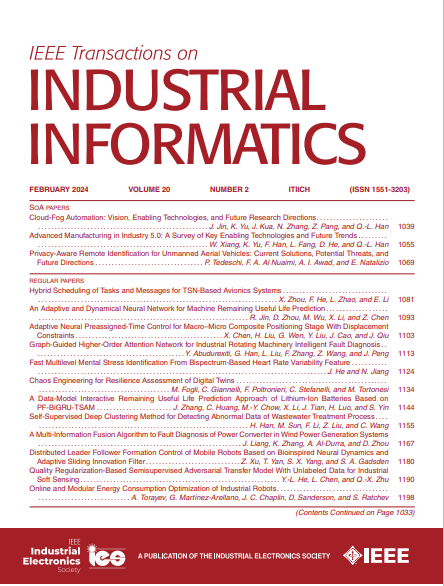基于视觉的工业检测小目标少镜头分割
IF 9.9
1区 计算机科学
Q1 AUTOMATION & CONTROL SYSTEMS
引用次数: 0
摘要
基于视觉的工业检测(VII)旨在快速准确地定位缺陷。近集环境下的监督学习和工业异常检测作为VII中常见的两种范式,在实际应用中面临着不同的问题。前者是难以获得各种缺陷和充分缺陷,后者是无法定位具体缺陷。为了解决这些问题,在本文中,我们重点研究了少镜头语义分割(FSS)方法,该方法可以在不重新训练的情况下根据少量注释定位不可见的缺陷。与自然图像中的常见物体相比,VII中的缺陷很小。这给当前的FSS方法带来了两个问题:一是目标语义的扭曲,二是背景的误报。为了解决这些问题,我们提出了一种小目标少镜头分割(SOFS)模型。缓解的关键思想首先是避免原图像的大小调整,正确表示目标语义的强度。SOFS通过非调整大小过程和支持注释的原型强度降采样实现了这个想法。其次,我们在SOFS中设计了一个异常先验图来指导模型减少假阳性,并提出了一个混合正态骰子损失来防止模型优先预测假阳性。SOFS可以实现FSS和支持掩码确定的少射异常检测。各种实验证明了SOFS的优越性能。本文章由计算机程序翻译,如有差异,请以英文原文为准。
Small Object Few-Shot Segmentation for Vision-Based Industrial Inspection
Vision-based industrial inspection (VII) aims to locate defects quickly and accurately. Supervised learning under a close-set setting and industrial anomaly detection, as two common paradigms in VII, face different problems in practical applications. The former is that various and sufficient defects are difficult to obtain, while the latter is that specific defects cannot be located. To solve these problems, in this article, we focus on the few-shot semantic segmentation (FSS) method, which can locate unseen defects conditioned on a few annotations without retraining. Compared to common objects in natural images, the defects in VII are small. This brings two problems to current FSS methods: first, distortion of target semantics and second, many false positives for backgrounds. To alleviate these problems, we propose a small object few-shot segmentation (SOFS) model. The key idea for alleviating, first, is to avoid the resizing of the original image and correctly indicate the intensity of target semantics. SOFS achieves this idea via the nonresizing procedure and the prototype intensity downsampling of support annotations. To alleviate, second, we design an abnormal prior map in SOFS to guide the model in reducing false positives and propose a mixed normal dice loss to prevent the model from predicting false positives preferentially. SOFS can achieve FSS and few-shot anomaly detection determined by support masks. Diverse experiments substantiate the superior performance of SOFS.
求助全文
通过发布文献求助,成功后即可免费获取论文全文。
去求助
来源期刊

IEEE Transactions on Industrial Informatics
工程技术-工程:工业
CiteScore
24.10
自引率
8.90%
发文量
1202
审稿时长
5.1 months
期刊介绍:
The IEEE Transactions on Industrial Informatics is a multidisciplinary journal dedicated to publishing technical papers that connect theory with practical applications of informatics in industrial settings. It focuses on the utilization of information in intelligent, distributed, and agile industrial automation and control systems. The scope includes topics such as knowledge-based and AI-enhanced automation, intelligent computer control systems, flexible and collaborative manufacturing, industrial informatics in software-defined vehicles and robotics, computer vision, industrial cyber-physical and industrial IoT systems, real-time and networked embedded systems, security in industrial processes, industrial communications, systems interoperability, and human-machine interaction.
 求助内容:
求助内容: 应助结果提醒方式:
应助结果提醒方式:


